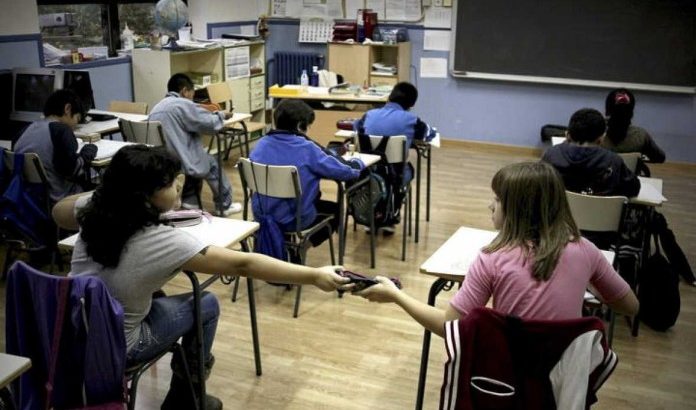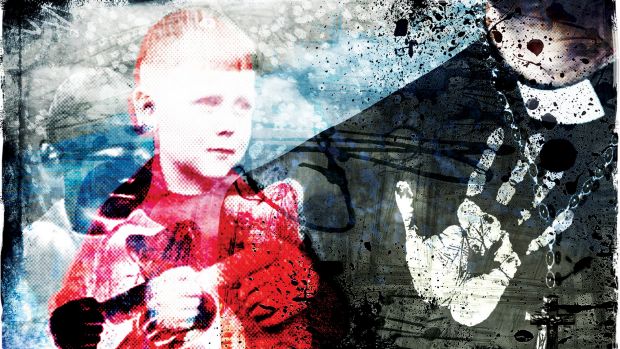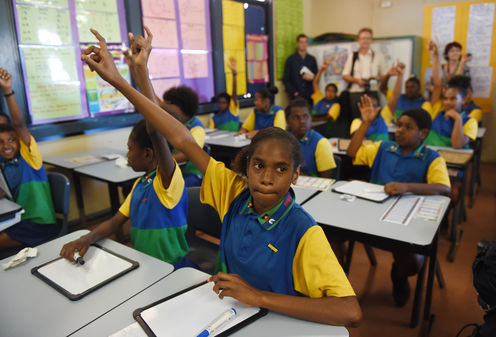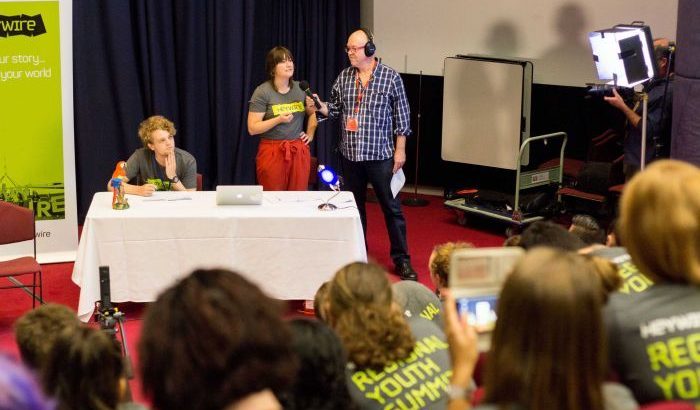Australia/Febrero de 2017/Fuente: The Sydney Morning Herald
RESUMEN: Mark Fabbro recuerda más vivamente el callistoon floreciente y el cielo azul fuera de la ventana de la pequeña habitación escondida detrás de la oficina del sacerdote. Todo lo demás – el látigo, la sensación de que su piel desnuda se presiona en el sofá de cuero, el sacerdote murmurando en latín detrás de él – vuelve en instantáneas fracturadas, imágenes que se levantan sin necesidad de los profundos pozos de la memoria de la infancia. «Ese fue un escape mental para mí, por la ventana y en la naturaleza», dice Fabbro. «Aparentemente me enviaron de nuevo, pero no puedo recordar lo que pasó [la segunda vez]. Es como si mi mente se apagara mientras cruzaba el patio de recreo». Fabbro tenía sólo 11 años cuando fue violado por el sacerdote jesuita John Byrne en el prestigioso Xavier College de Melbourne. Las estadísticas de esta semana son espantosas «, admitió uno de los directores de la escuela católica. Pensar que podría haber continuado y luego haber vuelto a repetir. Creo que en el futuro habrá un modelo de gobierno en las escuelas católicas que es muy diferente del actual «. Funcionarios católicos que hablaron esta semana con Fairfax Media insisten en que sus escuelas se ejecutan de manera muy diferente ahora. Las autoridades federales y estatales han reforzado los requisitos de inscripción escolar, incluyendo estándares más estrictos de protección infantil, que las escuelas religiosas e independientes deben cumplir. Y los padres todavía hacen cola para inscribir a los niños en las escuelas administradas por la iglesia.
Mark Fabbro remembers most vividly the flowering callistemon and blue sky outside the window of the small room tucked behind the priest’s office.
Everything else – the whip, the feel of his bare skin being pressed into the leather couch, the priest mumbling in Latin behind him – comes back in fractured snapshots, images rising unbidden from the deep wells of childhood memory.
«That was a mental escape for me, out the window and into nature,» Mr Fabbro says. «Apparently I was sent there again but I can’t remember what happened [the second time]. It’s like my mind shut down as I crossed the playground.»
Mr Fabbro was just 11 when he was raped by Jesuit priest John Byrne at the prestigious Xavier College in Melbourne.
«The church has proven it is unable to govern itself or in the interests of children over many decades,» the survivor’s advocate says.
«It has concealed the crimes. It’s time the civil authorities step in and ensure an appropriate degree of governance.»
Leonie Sheedy, co-founder of support group Care Leavers Australia Network, argues Catholic schools should get «no more taxpayer dollars» until there is greater accountability. Federal funding is generous: $5.5 billion to the Catholic sector in 2014, topping up state and parent contributions.
She is not alone. Many victims are demanding a comprehensive external review of the sprawling maze that constitutes Australia’s Catholic education system. The case for fundamental change gained powerful traction this week when senior counsel assisting the Royal Commission into Institutional Responses to Child Sexual Abuse, Gail Furness, SC, laid bare the breathtaking scale of it: nearly 4500 alleged victims within more than 1000 separate Catholic institutions who made complaints between 1980 and February 2015, and close to 2000 alleged perpetrators
Most staggering were the proportions of abusers within some of the semi-autonomous Catholic religious orders (spiritual communities, often with roots in the church’s European ancestry).
These organisations had tentacles deep into the Catholic school system, with some of the worst abuse reported in the schools they ran. They included the Order of St John of God, where the proportion of alleged perpetrators was estimated at 40.4 per cent; the Christian Brothers (22 per cent) and the Marist brothers (20.4 per cent).
«The statistics this week are appalling,» one Catholic school principal admitted. «To think it could have gone on, and then gone on again, and again. I think in the future there will be a governance model in Catholic schools that is very different from today’s.»
Catholic officials who spoke to Fairfax Media this week insist their schools are run very differently now. Federal and state government authorities have tightened school registration requirements, including tougher child protection standards, which religious-based and independent schools must comply with. And parents are still queuing up to enrol kids in church-run schools.
Yet even a cursory examination of how the Catholic education system is structured in Australia reveals a dizzying complexity within each state which obscures lines of accountability. And there remain striking differences between states.
In New South Wales, for instance, there are 592 Catholic schools with a combined quarter of million students. Of these, 548 are diocesan or «systemic» schools under the administration of no less than 11 individual dioceses reporting to 11 different bishops.
The remaining 44 Catholic schools in the state are run either by the independent Catholic orders, or by associated entities with the obscure church title of «public juridic person».
Acting executive director of the Catholic Education Commission NSW, Ian Baker, insists child protection is now triply safeguarded by mandatory reporting of child sexual abuse backed by strict oversight through an array of state bodies, including the NSW Office of the Children’s Guardian, the NSW Education Standards Authority (NESA) and the Ombudsman.
«Working with children» checks are under way on all the state’s teachers, and on clergy who take up pastoral care in schools, he says.
«There are multiple agencies with multiple lenses on this matter,» says Mr Baker. «We are not denying any of the history. But the question is, can we be confident that within all schools in NSW – Catholic or otherwise – child protection is now transparently and independently oversighted? Our answer is yes.»
Yet in Victoria, unlike NSW, priests still have a lot of power in individual parishes and play a significant role in running all but a handful of the state’s 400 Catholic primary schools. Priests are charged with employing the principal, overseeing school finances and are central to setting up the governing board.
About half of Victoria’s approximately 100 secondary schools are owned by 21 different religious orders – each have varying governance structures. The other half, the systemic schools, fall under the four Victorian dioceses to which they belong.
The Catholic Education Commission of Victoria – which distributes taxpayers’ money to the state’s 492 Catholic schools – refused requests for an interview, spokesman Christian Kerr saying it was «inappropriate» to comment before officials appeared before the royal commission next week.
Catholic Religious Victoria, which represents the various congregations that run schools, said parents could be confident all schools complied with statutory requirements and were committed to child safety.
«We want to make sure that this kind of terrible thing could never happen again,» said its president, Sister Veronica Hoey.
«I’m reassured that our schools are compliant with all processes, procedures and policies.»
Yet asked about the reporting mechanisms in place for the religious order-run schools, one experienced principal replied: «It’s as clear as mud. Who would know?»
Another Catholic education official admits it’s taken him years to understand the system.
The welter of bodies with a finger in the Catholic education pie include the Australian Catholic Bishops Conference, which last year set up a new entity called Catholic Professional Standards Limited and the National Catholic Education Commission, an advocacy group. The Catholic orders have their own umbrella group, Catholic Religious Australia.
Yet there is, as one seasoned church observer puts it, «no CEO of the Catholic church in Australia, there is no boss. There is nobody who runs it. Each bishop or archbishop in each diocese – whether in the cities or outback Australia – answer only to the Holy See in Rome.»
Former principal of St Joseph’s College in Geelong, Paul Tobias, has told the the royal commission the church is persisting with «antiquated» governance models. He believes there remains too much power among the few people at the top with not enough input from non-clerics and women.
Some of the orders named and shamed before the royal commission this week (such as St John of God) no longer run schools in Australia. Others are putting a greater emphasis on lay administration.
These include Edmund Rice Education Australia (named after the early 19 century founder of the Christian Brothers order) which 10 years ago took over the running of all Christian Brothers schools in the country.
EREA’s executive director Wayne Tinsey insists that «the congregation of the Christian Brothers have nothing to do with the day to day management, governance or leaderships of the schools, which they previously owned but are now owned by us».
Even so, the order’s Rome-based Congregation Leader appoints the council of trustees, who then appoint a board of management to run the organisation’s 50 schools.
Dr Tinsey admits shock at the figures coming out of the royal commission this week. «It is an uncomfortable time to be a Catholic,» he says.
«It’s part of a destructive and shameful reality in our national history and we are totally committed to it never ever happening again.»
Yet he maintains organisations such as his should be able to keep their autonomy within the church and the school system, to keep faith with the order’s original mission, or «charism», in church parlance.
Chris MacIsaac, from victims support group Broken Rites, said a problem for many clergy abuse victims was that the hierarchy of their former schools did not acknowledge or address the scourge of abuse when they came forward.
Melbourne lawyer Vivian Waller says while many abuse victims do not trust Catholic institutions to look after children, banning a religious denomination from teaching «feels like a dangerous course».
Dr Waller, who has represented hundreds of victims of abuse at the hands of clergy, says church-run schools need to «walk the walk and what the community want to see is that they have put processes in place for protecting children and reporting to police».
But not all parts of the church are yet «walking the walk». Even the royal commission is having trouble extracting documents from the Holy See, Ms Furness revealed this week. The task ahead, she flagged, would be to identify the «structural, governance and cultural» factors that must change inside the church to ensure its dark past never returns.
Fuente: http://www.smh.com.au/national/catholic-education-system-under-a-cloud-after-child-sex-abuse-commission-findings-20170210-gua1pv.html













 Users Today : 26
Users Today : 26 Total Users : 35460483
Total Users : 35460483 Views Today : 46
Views Today : 46 Total views : 3419341
Total views : 3419341